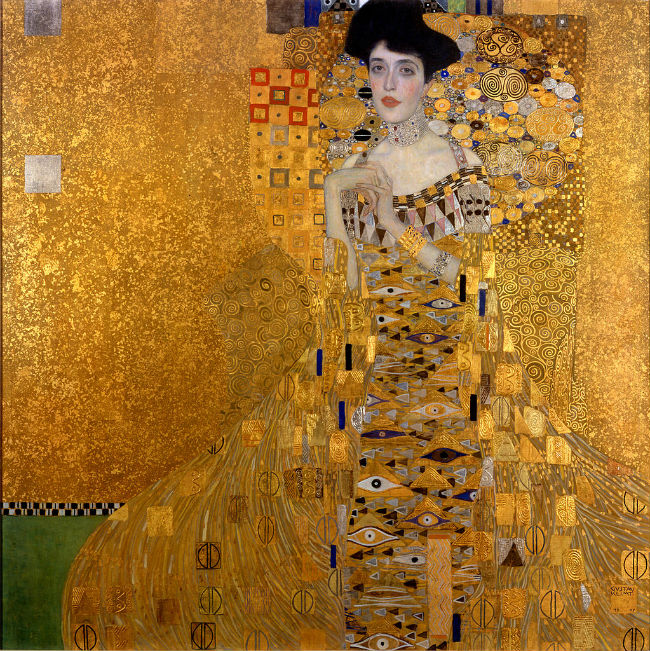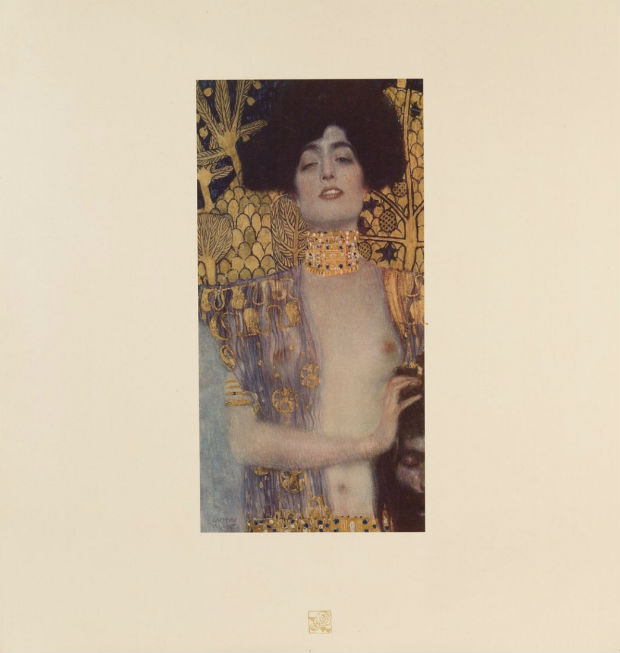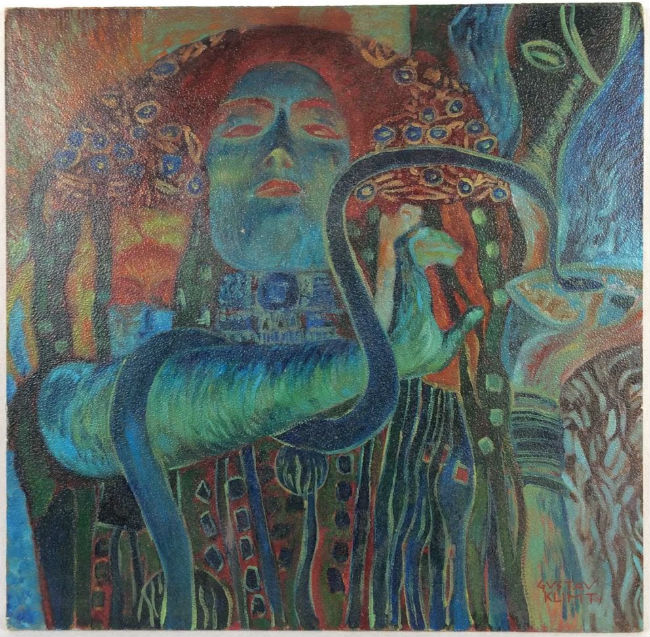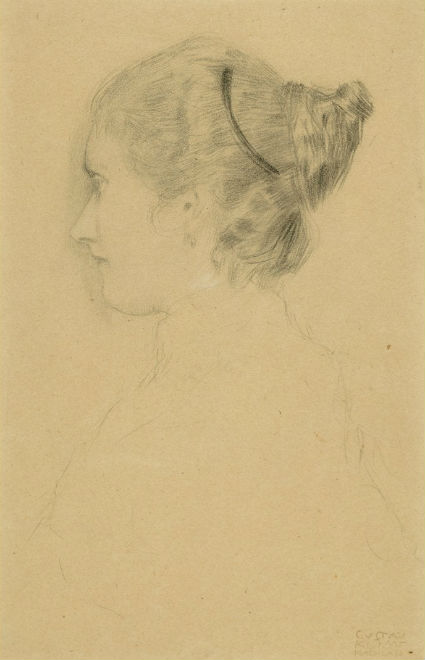
NEW YORK – Starting with a series of three ceiling murals for the University of Vienna in 1894, Gustav Klimt painted highly romantic scenes that were quite controversial in their day. Some paintings of an erotic nature were even decried as pornographic. His art legacy in the Vienna Secession movement and the annals of art history overall was cemented, however, with iconic works painted during his Golden period that saw the artist incorporate gold leaf into his artworks.
Chief among these are The Kiss and two full-length portraits of Adele Bloch-Bauer. The Kiss hangs in the Österreichische Galerie Belvedere museum in Vienna while Portrait of Adele Bloch-Bauer I (above) is in the Neue Galerie, a museum in New York City. The second portrait of Adele was sold in 2016 and is in a private collection.
Born in 1862 into a family of artists, Klimt propelled Austrian art to new heights. He is perhaps best known for his representations of the female body and the allegorical nature of his paintings.

“Gustav Klimt was one of the most popular and groundbreaking artists of the ‘Vienna 1900’ era, who elaborated a specific and unique style, which made him incomparable,” said Laura Erhold, assistant to the Directorate/Research Assistant at the Klimt Foundation in Vienna. “Klimt himself knew perfectly well how to mix already existing artistic ideas by transforming them into his very own art.”
Erhold noted Klimt’s legacy and influence on later artists is striking. “With this unique style and his aim to create something exceptional, he influenced and inspired artists of different genres (music, literature and of course art) as well during his lifetime as after his death,” she said. “That is the reason why he shaped an entire period and forced a long-term effect. Even nowadays, contemporary artists are still regarding Gustav Klimt as a source of inspiration in Austria, e.g. Brigitte Kowanz, Irene Andessner or Nives Widauer and worldwide.”

Besides Klimt’s stylistic ideas, he is also renowned for having founded, in 1883, together with his brother Ernst Klimt and Franz Matsch, the artists’ association “Künstlercompagnie.” He is closely associated with the Vienna Secession movement. In 1897, he became a founding member of the organization and served as its first president, Erhold explained. “He was the changing artist in ‘Vienna 1900.’ Without Gustav Klimt, Austrian art would not exist as it does today. This is probably his most important legacy.”
As of this writing, an exhibition at the Neue Galerie (on view fall 2019-January 2020), “Austrian Masterworks from Neue Galerie New York,” showcases a range of the artist’s works from his famed portraits to fine landscapes. “The late unfinished works, Ria Munk III (1917) and The Dancer (1916-17), offer unparalleled insight into Klimt’s working method,” according to a museum press release. In these two works, the artist created a preliminary outline in charcoal, which he then detailed in using oil paints.

Depending on the motive, Klimt had different working methods, explained Erhold. “With regard to his landscape paintings and especially while staying at Lake Attersee during his summer sojourns, he used his so-called ‘seeker,’ a viewfinder made from a piece of cardboard with a hole in it, to find the details for his landscapes,” she said. “With regard to his floral paintings, such as Cottage Garden (1907), the impression of a floral carpet or mosaic is obvious, as he really focused on representing different flowers in a very detailed way. Someone might even think of a floral ‘horror vacui.’”
“Almost no landscape sketches by Klimt are known to survive,” said Janis Staggs, director of Curatorial and Manager of Publications, Neue Galerie New York. “For his landscapes, Klimt worked in situ and made a rough outline of the intended composition on the canvas working outdoors and during his summer holidays. Sometimes these compositions were completed upon his return to his studio in Vienna.”

When working on a portrait, Klimt created different sketches of the person as preparation work before starting with the actual painting, Erhold noted. Sometimes he even encouraged his models to wear their clothes in inventive ways to create something new and extraordinary. For the Portrait of Friederike Maria Beer (1916), the eponymous woman turned her Wiener Werkstätte jacket inside out, since Gustav Klimt preferred painting the colorful lining, Erhold said.
Speaking of color, no period in the artist’s career was as notable as his Golden Period and included many famous works of art, including the aforementioned The Kiss and his Adele portraits along with precursors such as Pallas Athene (1899), widely credited as the first of his Golden works; Judith I (1901), and The Beethoven Frieze (1902). “Klimt’s use of gold was inspired by a journey he had made to Italy in 1903. When he visited Ravenna, he saw the Byzantine mosaics in the Church of San Vitale,” Erhold said. “For Klimt, the flatness of the mosaics and their lack of perspective and depth enhanced their golden brilliance. He started to make unprecedented use of gold and silver leaf in his own work.”

With his distinctive style, Klimt stood out from the crowd, a most notable feat at the turn of the century. Around 1900, the world was changing rapidly, ushering in an era of ideas and new ways of seeing and creating art. “Vienna was not only a world capital but also a creative melting pot,” Erhold said. “Gustav Klimt reacted on these impressions and new ideas with his very own artistic creations.” His artworks, first misunderstood, then celebrated, still resonate with people today.


